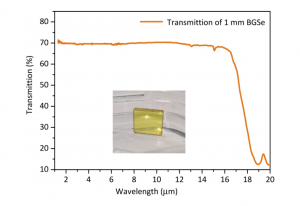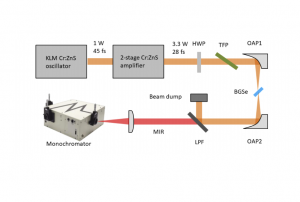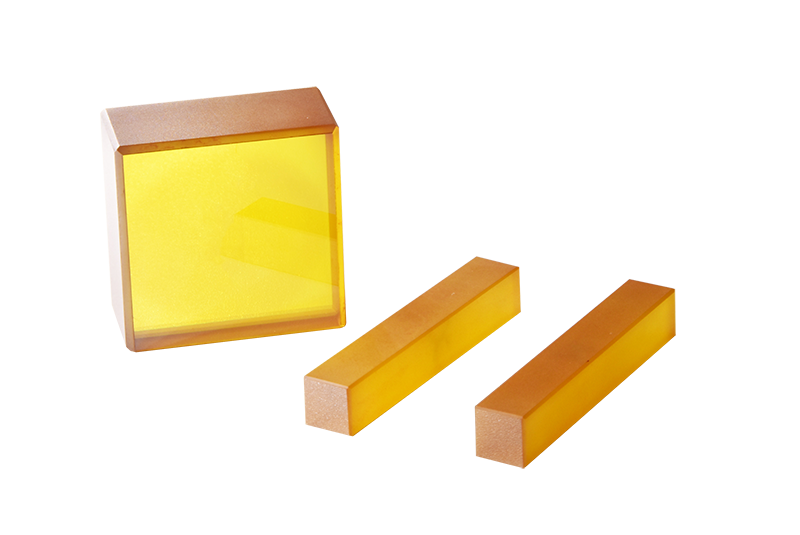Introduction
Mid-infrared (MIR) light in the range of 2-20 µm is useful for chemical and biological identification due to the presence of many molecular characteristic absorption lines in this spectral region . A coherent, few-cycle source with a simultaneous coverage of the broad MIR range can further enable new applications such as mirco-spectroscopy , femtosecond pump-probe spectroscopy , and high-dynamic-range sensitive measurements Until now numerous schemes have
been developed to generate coherent MIR radiation, such as synchrotron beam lines, quantum cascade lasers, supercontinuum sources , optical parametric oscillators (OPO) and optical parametric amplifiers (OPA). These schemes all have their own strengths and weaknesses in terms of complexity, bandwidth, power, efficiency, and pulse durations. Among them, intra-pulse difference frequency generation (IDFG) is attracting growing attention thanks to the development of high-power femtosecond 2 µm lasers that can effectively pump small-bandgap non-oxide nonlinear crystals to generate high-power broadband coherent MIR light. Compared to the normally used OPOs and OPAs, IDFG allows a reduction in system complexity and enhancement of reliability, as the need to align two separate beams or cavities at high precision is removed. Besides, the MIR output is intrinsically carrier-envelope-phase (CEP) stable with IDFG .
Fig 1
Transmission spectrum of the 1-mm-thick uncoated BGSe crystal provided by DIEN TECH. The inset shows the actual crystal used in this experiment.
Fig 2
Experimental setup of the MIR generation with a BGSe crystal. OAP, off-axis parabolic mirror with an effective focus length of 20 mm; HWP, half-wave plate; TFP, thin-film polarizer; LPF, long-pass filter.
In 2010, a new biaxial chalcogenide nonlinear crystal, BaGa4Se7 (BGSe), has been fabricated using the Bridgman-Stockbarger method . It has a wide transparency range from 0.47 to 18 µm (as shown in Fig. 1) with nonlinear coefficients of d11 = 24.3 pm/V and d13 = 20.4 pm/V. The transparency window of BGSe is significantly broader than ZGP and LGS although its nonlinearity is lower than ZGP (75 ± 8 pm/V). In contrast to GaSe, BGSe can also be cut at the desired phase-matching angle and can be anti-reflection coated.
The experimental setup is illustrated in Fig. 2(a). The driving pulses are initially generated from a home-built Kerr-lens mode-locked Cr:ZnS oscillator with a polycrystalline Cr:ZnS crystal (5 × 2 × 9 mm3 , transmission=15% at 1908nm) as the gain medium pumped by a Tm-doped fiber laser at 1908nm. The oscillation in a standing-wave cavity delivers 45-fs pulses operating at a repetition rate of 69 MHz with an average power of 1 W at a carrier wavelength of 2.4 µm. The power is amplified to 3.3 W in a home-built two-stage single-pass polycrystalline Cr:ZnS amplifier (5 × 2 × 6 mm3 , transmission=20% at 1908nm and 5 × 2 × 9 mm3 , transmission=15% at 1908nm), and the output pulse duration is measured with a home-built second-harmonic-generation frequency-resolved optical grating (SHG-FROG) apparatus.









